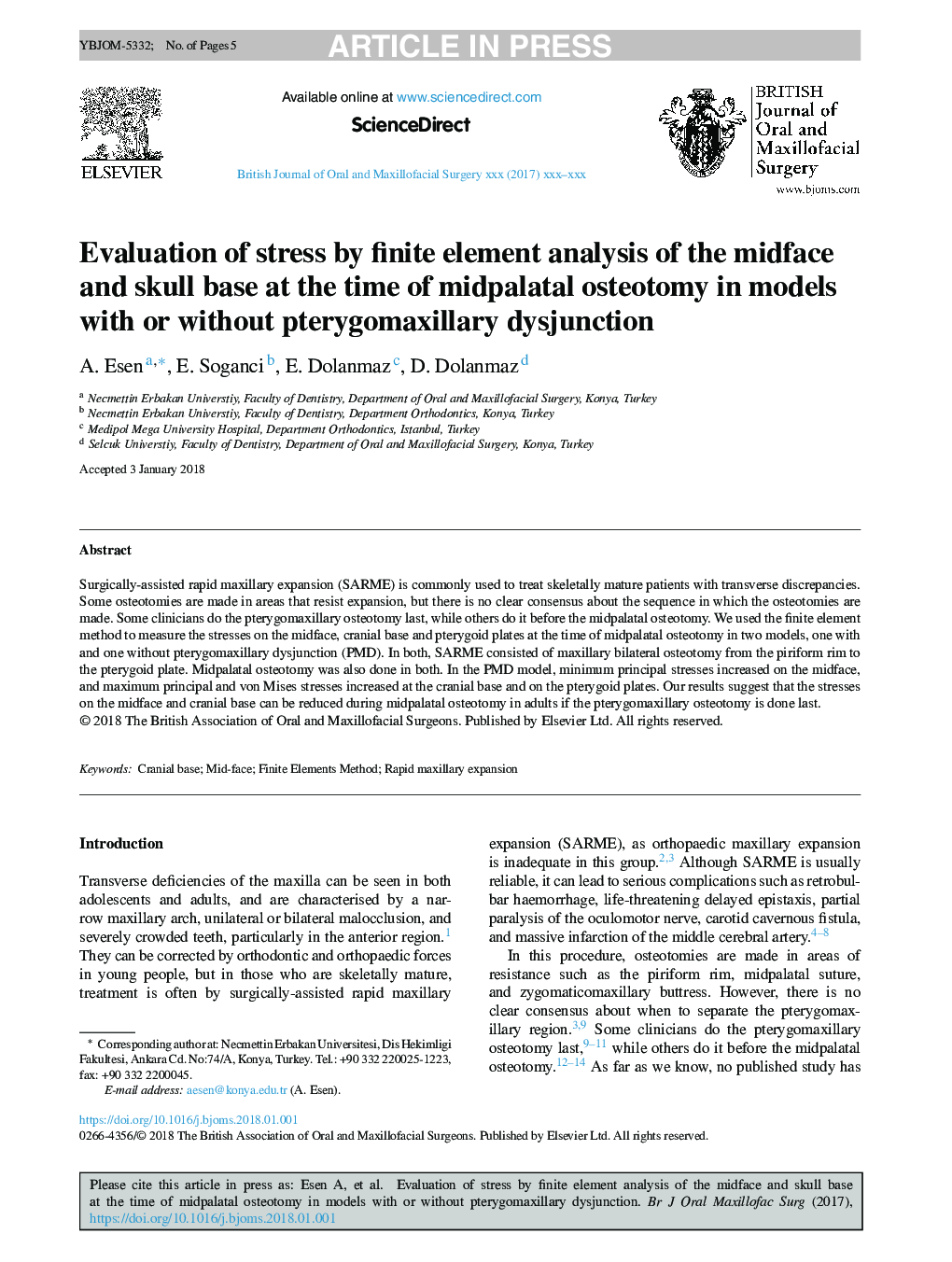| Article ID | Journal | Published Year | Pages | File Type |
|---|---|---|---|---|
| 8696770 | British Journal of Oral and Maxillofacial Surgery | 2018 | 5 Pages |
Abstract
Surgically-assisted rapid maxillary expansion (SARME) is commonly used to treat skeletally mature patients with transverse discrepancies. Some osteotomies are made in areas that resist expansion, but there is no clear consensus about the sequence in which the osteotomies are made. Some clinicians do the pterygomaxillary osteotomy last, while others do it before the midpalatal osteotomy. We used the finite element method to measure the stresses on the midface, cranial base and pterygoid plates at the time of midpalatal osteotomy in two models, one with and one without pterygomaxillary dysjunction (PMD). In both, SARME consisted of maxillary bilateral osteotomy from the piriform rim to the pterygoid plate. Midpalatal osteotomy was also done in both. In the PMD model, minimum principal stresses increased on the midface, and maximum principal and von Mises stresses increased at the cranial base and on the pterygoid plates. Our results suggest that the stresses on the midface and cranial base can be reduced during midpalatal osteotomy in adults if the pterygomaxillary osteotomy is done last.
Related Topics
Health Sciences
Medicine and Dentistry
Dentistry, Oral Surgery and Medicine
Authors
A. Esen, E. Soganci, E. Dolanmaz, D. Dolanmaz,
